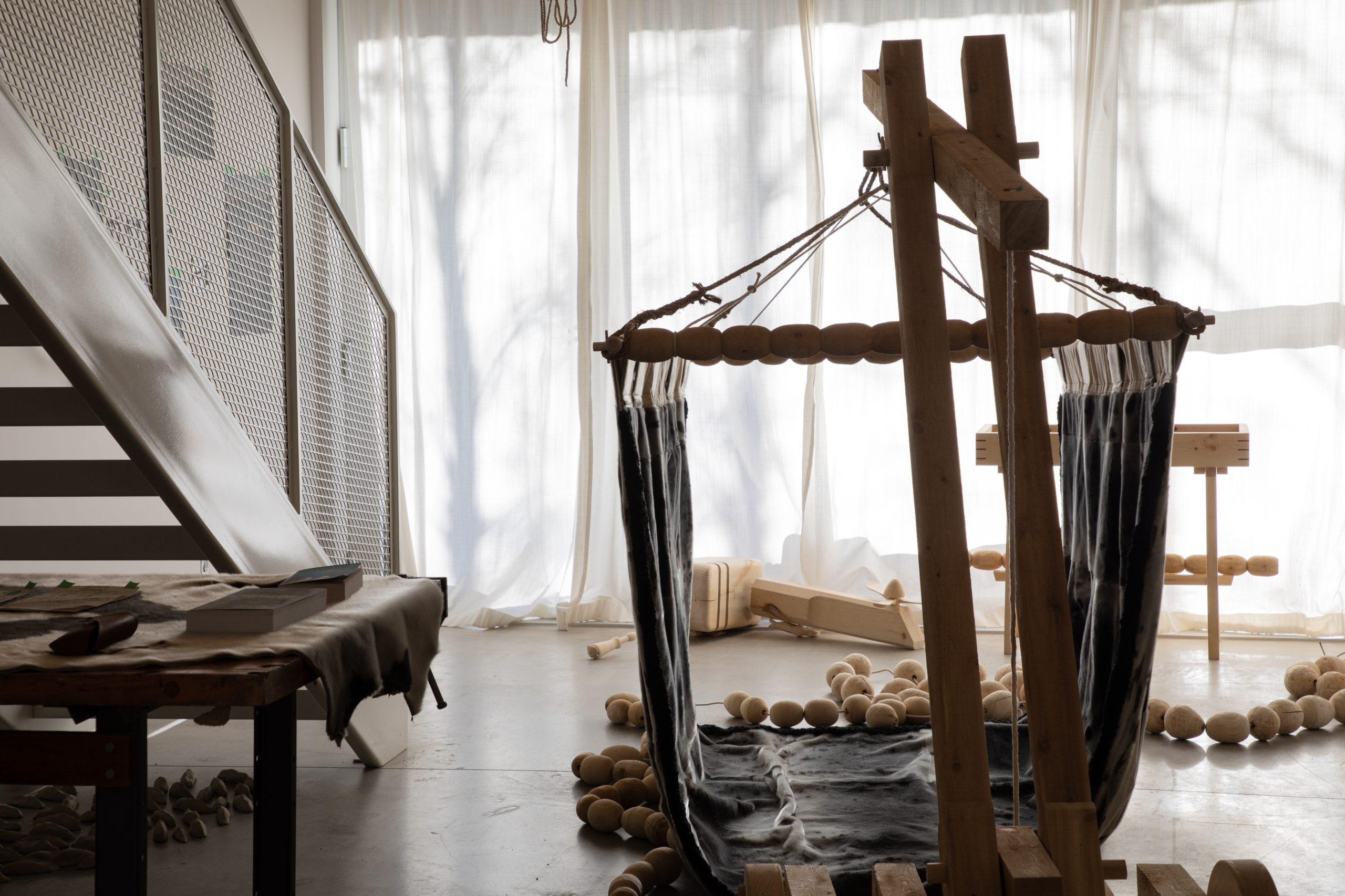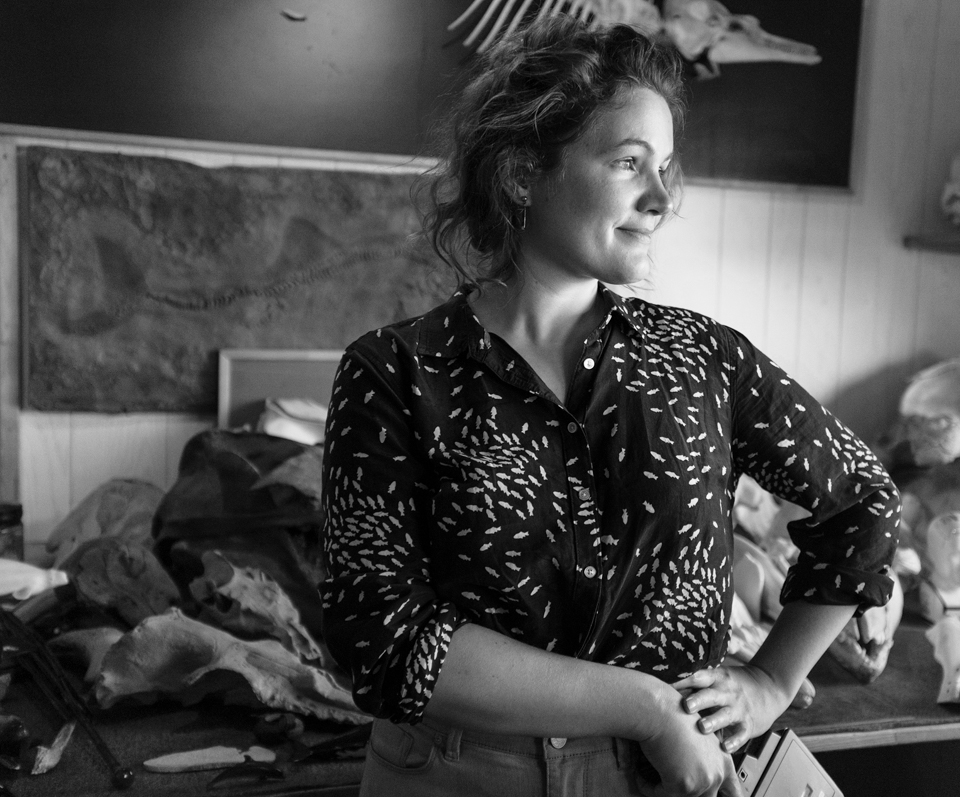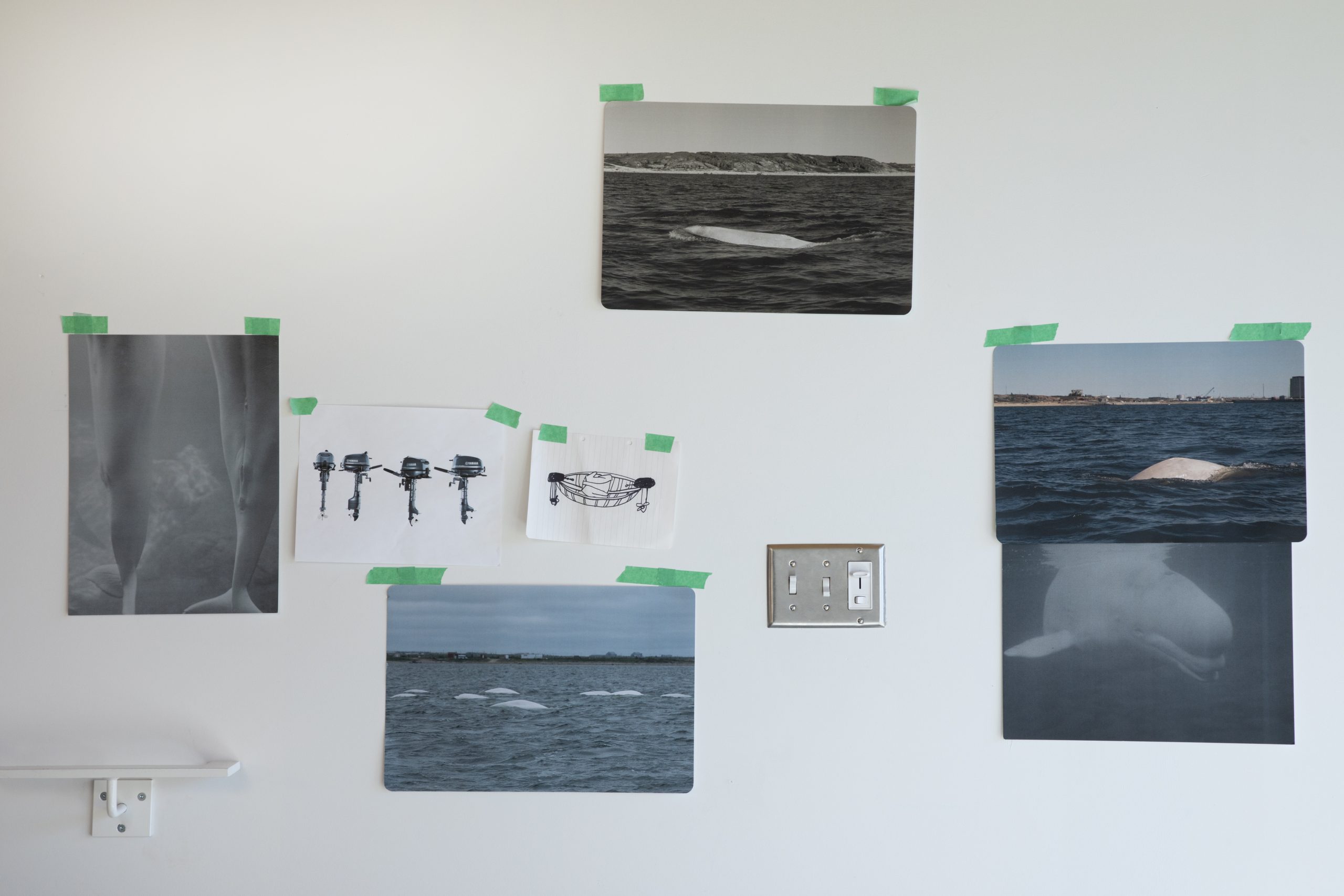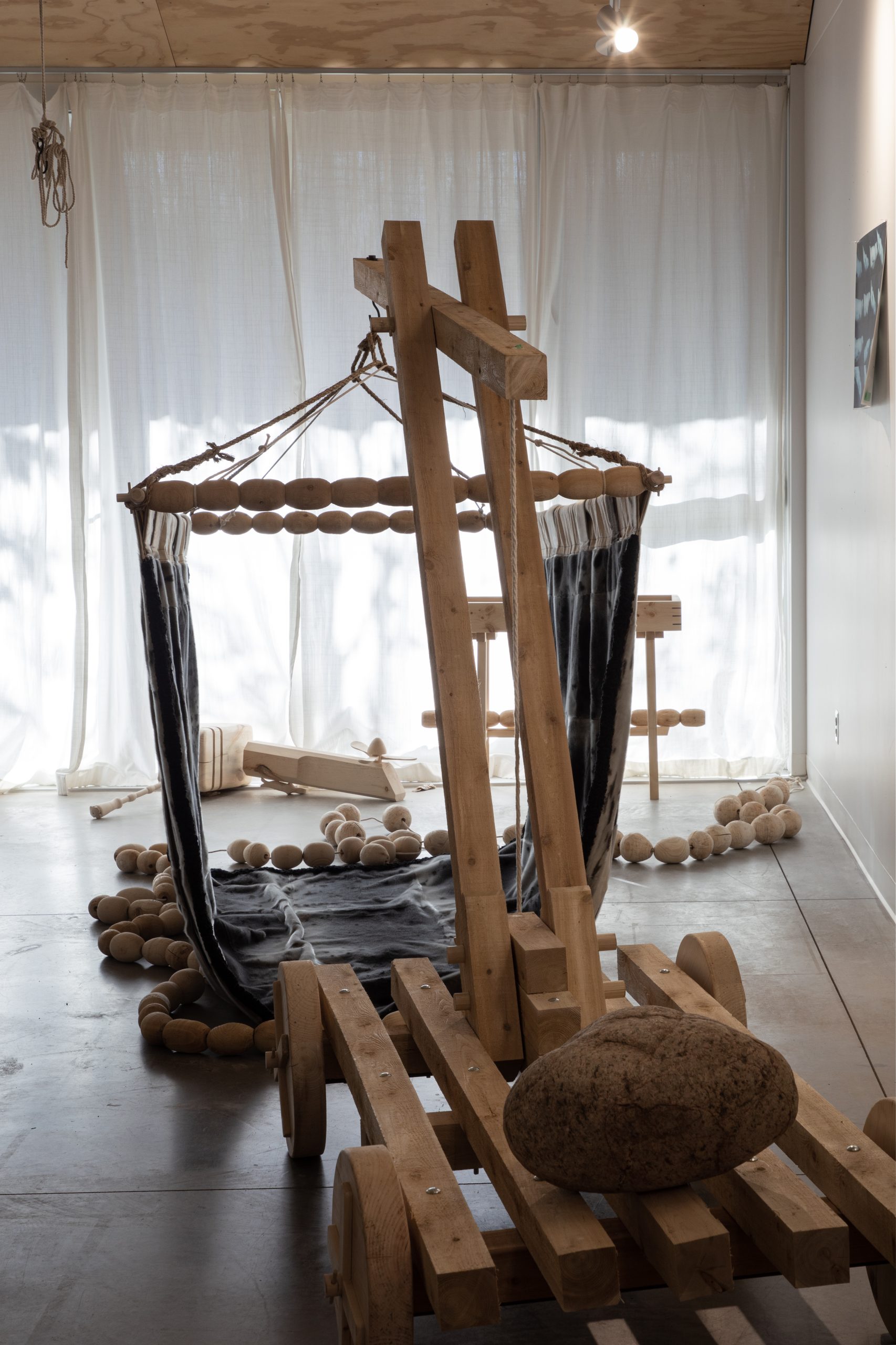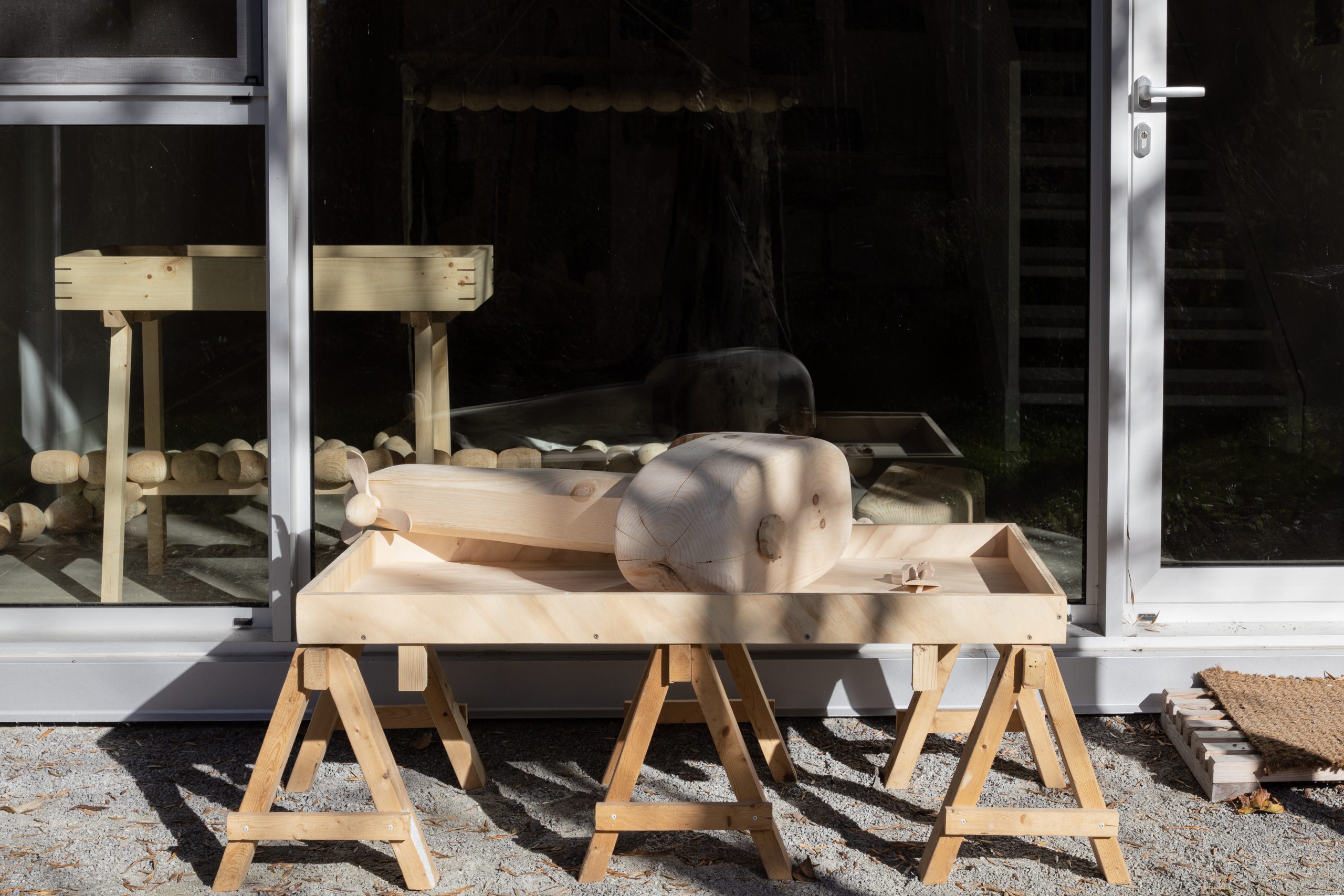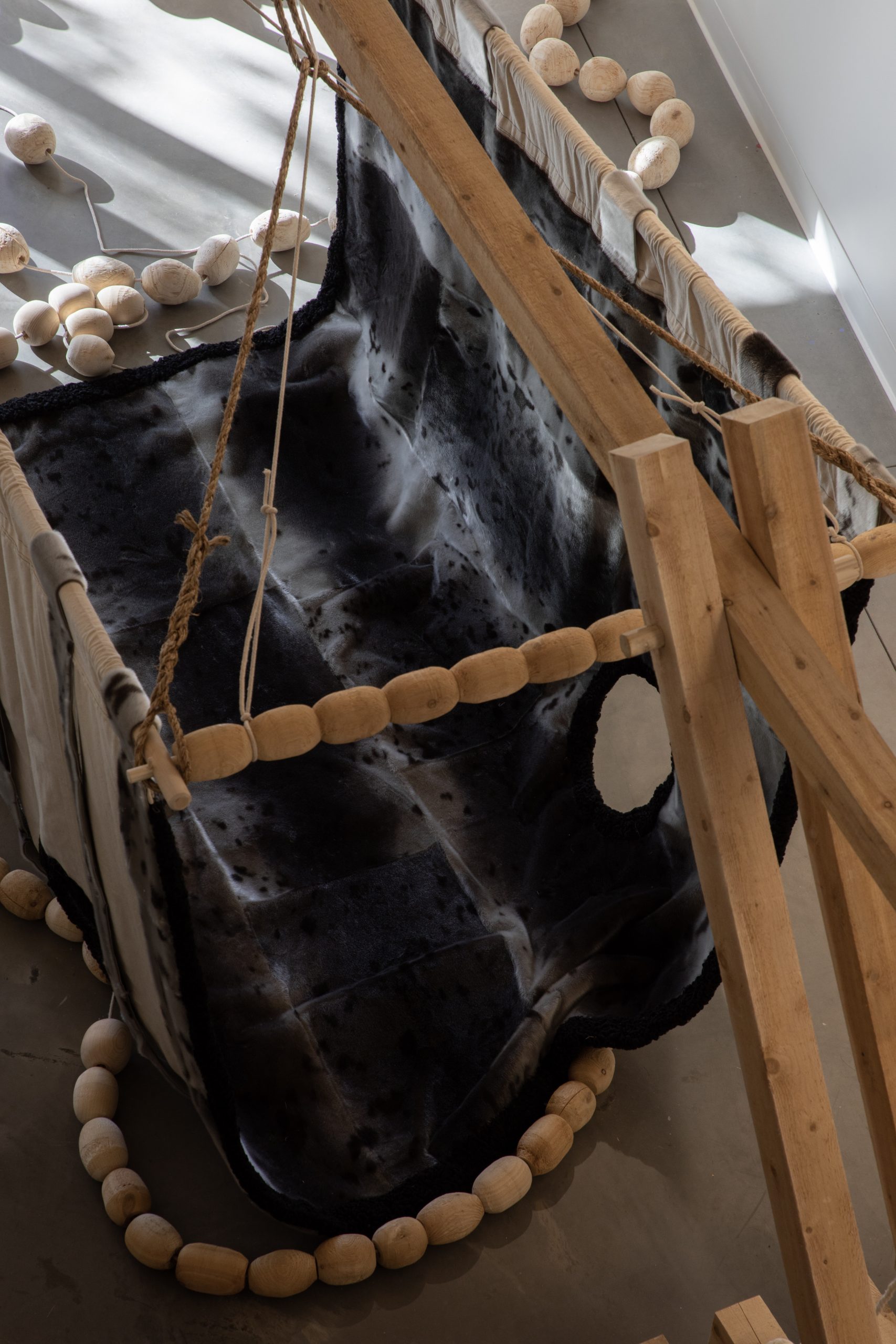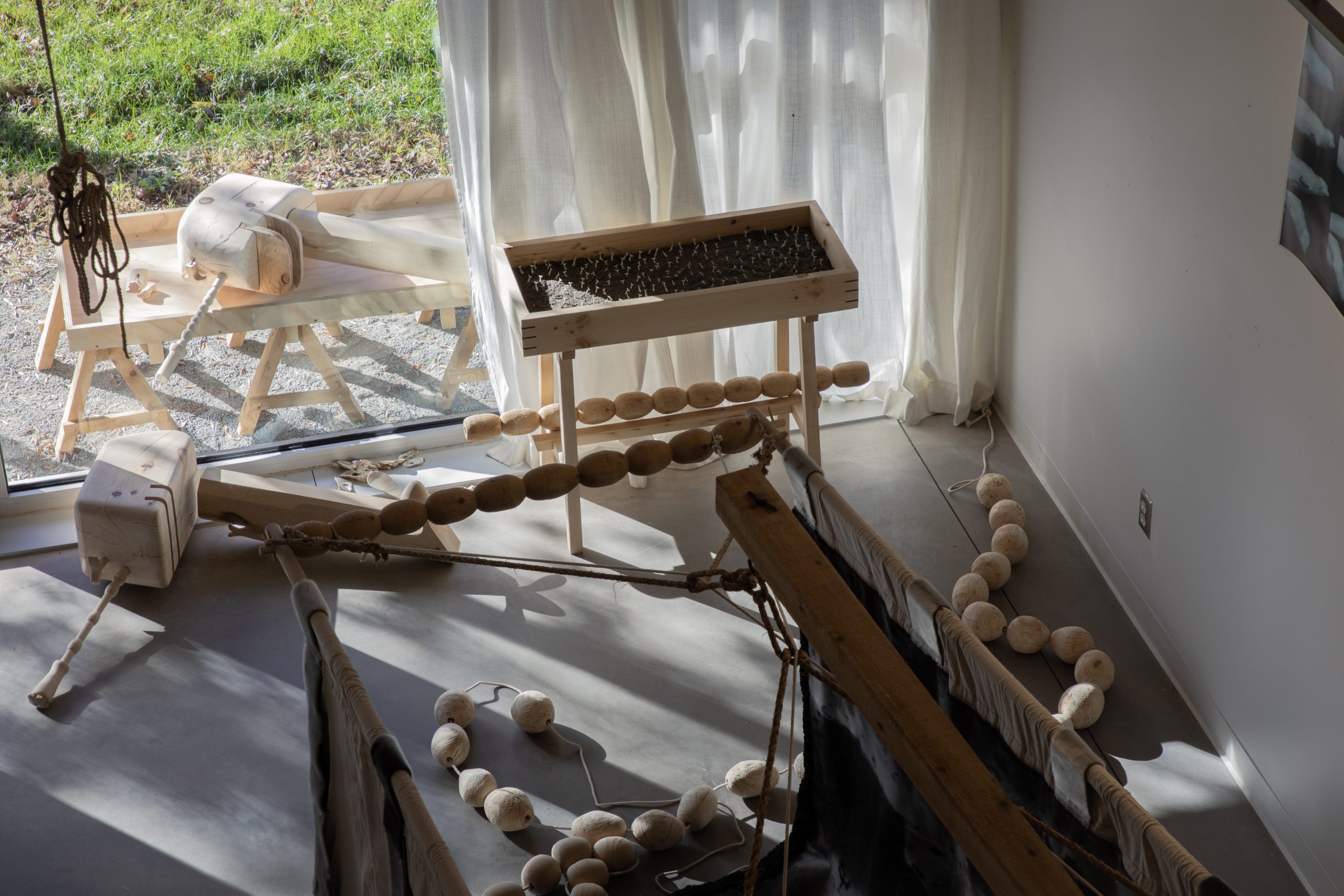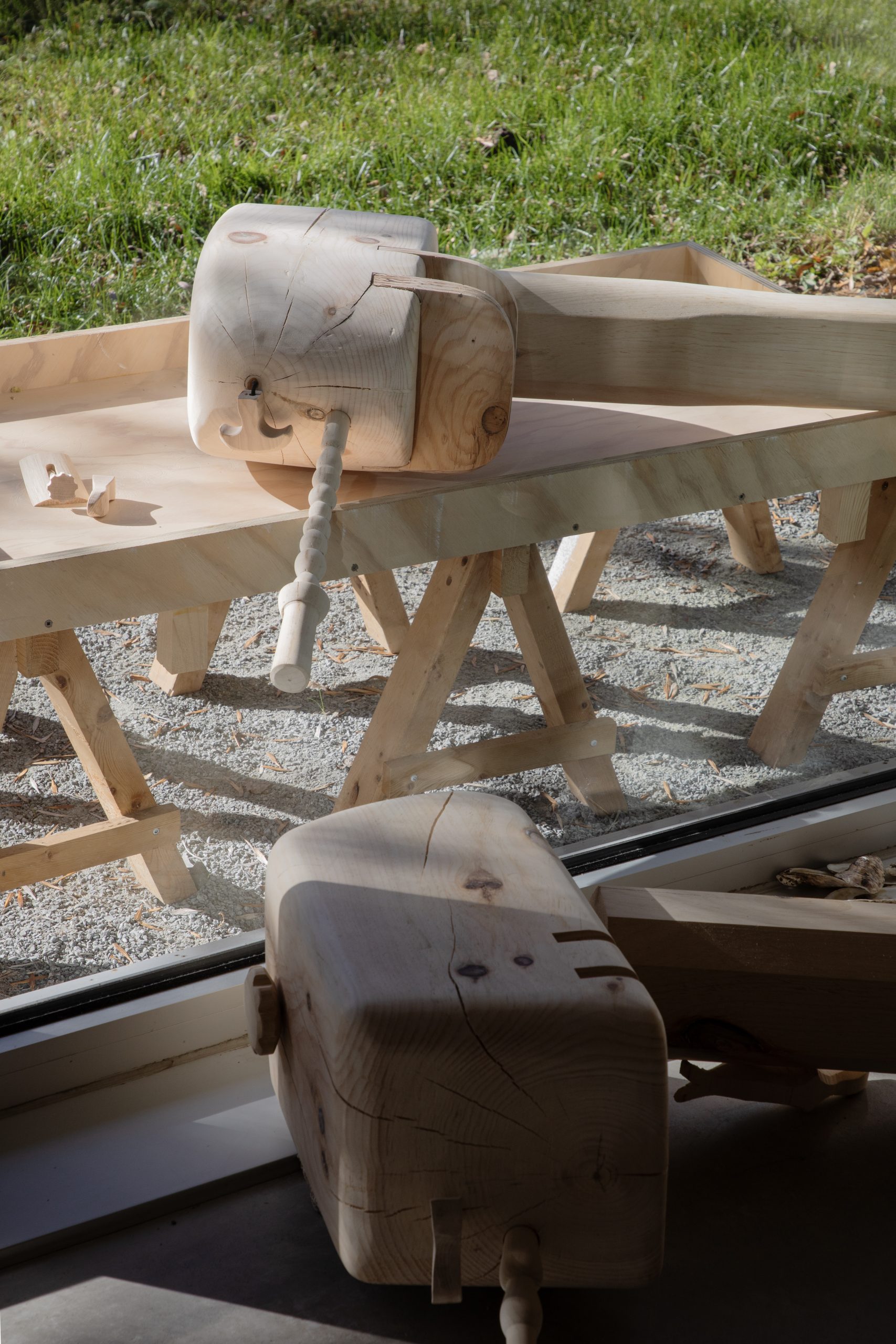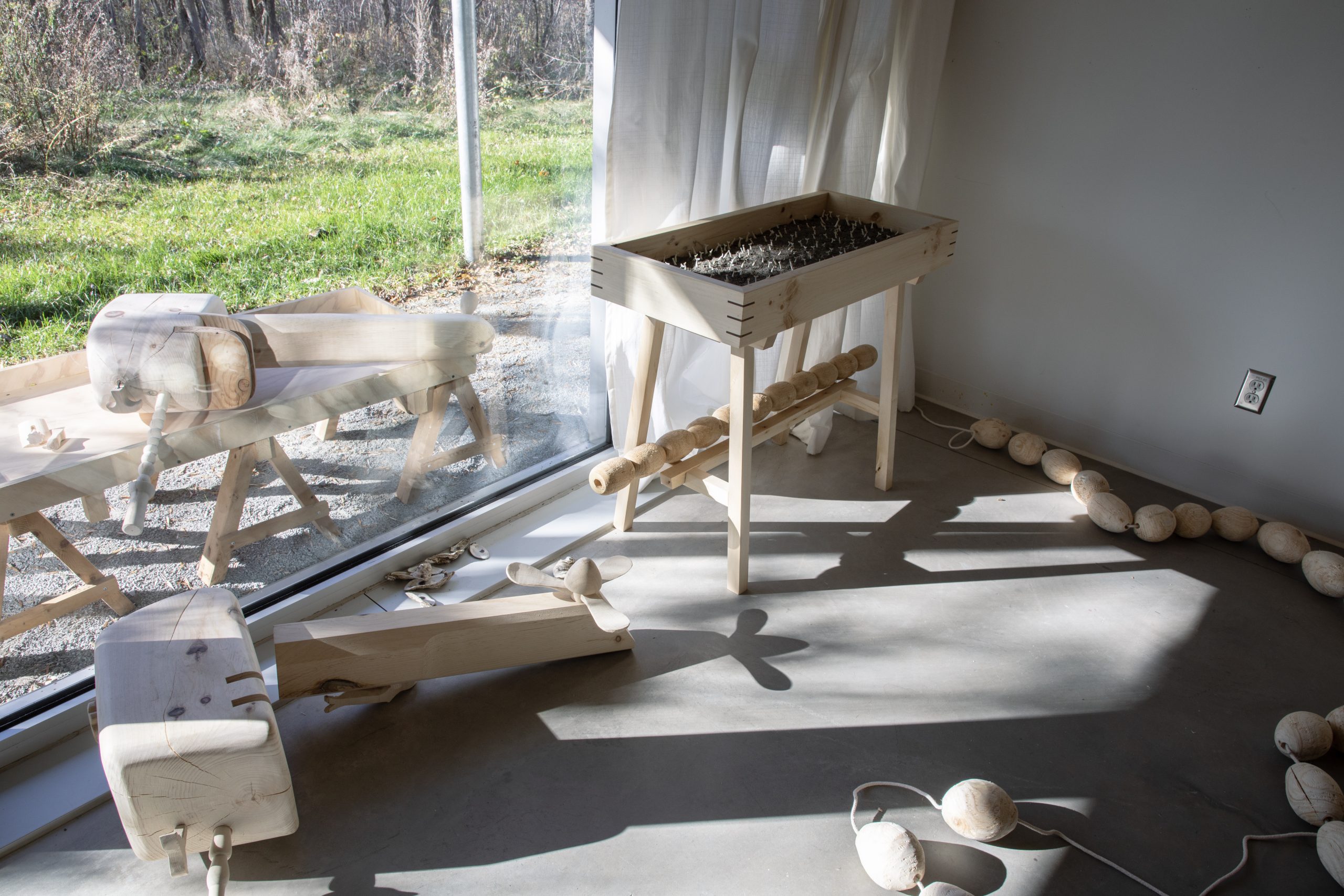Maryse Goudreau
Testimony
Maryse Goudreau, an artist with a hybrid practice, has for some ten years been pursuing patient, detailed research on belugas, with the conviction that our relationship with the small white whales and our representations of them say as much about us as about them. Goudreau’s interest in belugas recently led her to develop related research on seals, which was an essential part of her project at Est-Nord-Est. At the centre, she returned to her sculpture project of a whale stretcher – an object that evokes both running aground and rescue – whose hammock (the suspended part) is composed of sealskins. The stretcher thus becomes, she says, an opportunity for an ecosystemic cohabitation in which one animal (dead) takes care of another animal (injured). During her residency, Goudreau attached a wooden crane to the stretcher, in preparation for an exhibition at the Biosphère.
By one of those strokes of luck that arises so often in artists’ work, Goudreau’s stay near the St. Lawrence River offered an opportunity to look more closely at belugas – from Hudson Bay. Following the woodworking tradition in Saint-Jean-Port-Joli and taking advantage of access to the ENE workshops, Goudreau worked on three other sculptures. Inspired by the hunting and observation boats from Hudson Bay, the first work was in the form of a canoe, to which two wooden motors on either side were affixed, and which now could go nowhere. The second was a hundred turned-wood balls evoking buoys, intended to mark the perimeter of an installation made of sealskins. The last was a found fur coat – an object that has not yet found its place in her work – hung on a coat hanger, evoking the 1960s beluga hunt in Hudson Bay, which fed the mink farms in Manitoba. All of these scattered objects were added to a proliferating and richly instructive archive on a species of whale that is living on borrowed time and on the humans who have caused its demise.
Biography
Aligned with an eco-feminist approach, Maryse Goudreau’s hybrid work combines photography, video, installation, performance, visual art, writing, and documentary research. She began to tackle political discourse with Histoire sociale du béluga (2016), in which she painstakingly compiled statements from Quebec’s Legislative Assembly covering almost one hundred years. Her immersive sonic and tactile installation Dans le ventre de la baleine (2019) simulates the sensations experienced when diving underwater with belugas. Renowned for her long-term projects in the field, Goudreau received the Prix Lynne-Cohen (MNBAQ) in 2017 and the Gaspé Peninsula artist of the year award from the CALQ in 2020.
Discover
Newsletter
Keep up to date with the latest news!
